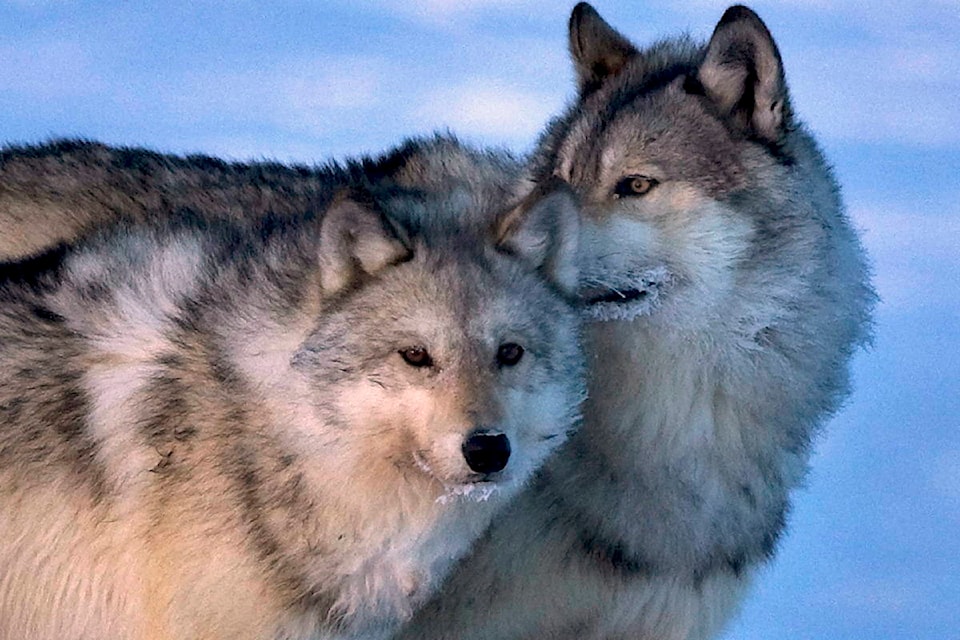New research suggests wolves can be steered away from the endangered caribou herds they prey on by making the man-made trails they use to hunt harder to move along.
The recently published study adds to the debate over whether governments should depend on shooting and poisoning wolves to protect caribou, said lead author Jonah Keim.
“It’s probably one of the most challenging conservation issues in the Northern Hemisphere,” said Keim, an independent researcher based in New York state.
Woodland caribou herds in Alberta and British Columbia have been declining for decades. Scientists blame habitat loss — since 2000, B.C. and Alberta have lost at least 33,000 square kilometres of old-growth forest — and increasing predation as wolves and bears follow roads and seismic lines into landscapes that once offered caribou refuge.
Governments, with scientific support, have turned to maternity pens, captive breeding and killing hundreds of wolves in an effort to keep caribou around.
Maybe there’s another way, Keim thought. Maybe the problem isn’t the wolves — it’s the artificial trails they’re taking advantage of.
“How do we get at movement?” he asked.
Keim and his colleagues set up motion detector cameras on logging roads, seismic lines and game trails throughout the Parker caribou range in northeast B.C. The team recorded movements of animals past those cameras for a year.
They measured which of those features were easiest to travel by timing themselves as they walked them. They considered which ones lead into the marshy wetlands that caribou like and which went to higher ground favoured by moose and deer.
Then, they made the easy trails into the best caribou habitat harder to move through.
“We hinged trees from the sides of the features into the seismic line,” Keim said. “(We) did soil mounding to create hummocks. We tried to make the feature as difficult to move down as was the adjacent habitat beside it.”
They sat for another year and let the cameras roll. Then they compared the incidence of wolves or bears and caribou using the same trail on the same day to what it was before the treatment as well as to an untreated control area.
“We were able to reduce the encounter rate between wolves and caribou by 85 per cent,” said Keim.
Dave Hervieux, an Alberta Environment caribou specialist, said Keim’s results are consistent with other studies but only address half the problem.
“Unnaturally high and unsustainable levels of wolf predation on caribou are due to both increases in wolf travel and increases in wolf numbers,” he wrote in an email.
“Linear feature restoration is a key action. However, our conclusion is that it is unlikely that linear feature restoration, as a sole action, will provide sufficient protection in the near-term for endangered woodland caribou populations.”
Hervieux said the government is working with industry to restore forest cover to seismic lines, pipelines and roads.
Still, Keim said focusing “encounter management” could go a long way to reducing Alberta’s and B.C.’s dependence on the annual killing of wolves.
“We know that predator removal is socially and ethically controversial and it may not be solving the true problem.”
sarah.grochowski@bpdigital.ca
Like us on Facebook and follow us on Twitter.
Want to support local journalism? Make a donation here.
